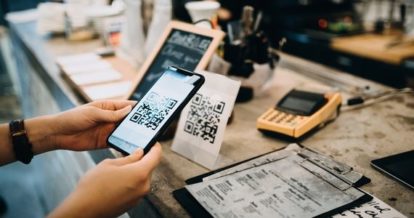Though self-service technology in restaurants is nothing new, the COVID-19 pandemic has radically changed the way consumers think about this futuristic tech.
Over the past few years, restaurants across North America have slowly begun bolstering their operations with self-service technology, such as self-ordering kiosks and online reservations. However, customers have not exactly embraced these changes with open arms. In fact, a 2018 MSN poll found that 78% of customers said they would be less inclined to go to a restaurant with self-ordering kiosks.
Just two years later, that attitude has completely turned on its head.
In the wake of the COVID-19 pandemic, restaurant automation self-service technology like self-ordering kiosks, online reservations, and contactless payments, has all helped to reduce the amount of face-to-face contact between restaurant staff and customers, making the restaurant experience safer for everyone involved. As a result, customers now see self-service technology as the key to helping them safely and comfortably navigate their favorite restaurants.
But even though customers are embracing self-service technology and contactless dining experience, implementing these solutions in your restaurant can still feel a bit daunting. To help you navigate these high-tech solutions, this article will cover:
- What self-service technology for restaurants is
- The top 5 benefits of this technology for restaurants
- How different types of self-service technology can help promote physical distancing
No matter what type of restaurant you run, self-service technology should be part of your short-term restaurant reopening strategy and your long-term plan for recovery.
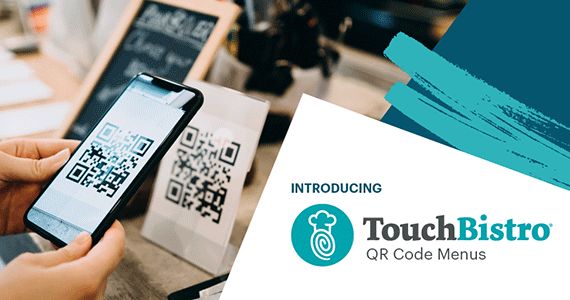
Instantly create contactless menus for your restaurant with TouchBistro’s QR Code Generator.
What Is Self-Service Technology for Restaurants?
Before diving into how self-service technology can help your restaurant navigate COVID-19, it’s important to clarify what self-service technology actually is.
Self-service technology refers to the technologies that allow people to produce services without the assistance of an employee. For example, an ATM allows you to take out money all by yourself, without ever interacting with a bank teller.
In the context of restaurants, self-service technologies can help customers carry out many different parts of the dining experience, from reserving a table, to ordering, and even paying for their meal.
And while the self-ordering kiosk is one of the most obvious examples of self-service technology for restaurants, online ordering, reservations platforms, and contactless payments all fall into this category as well.
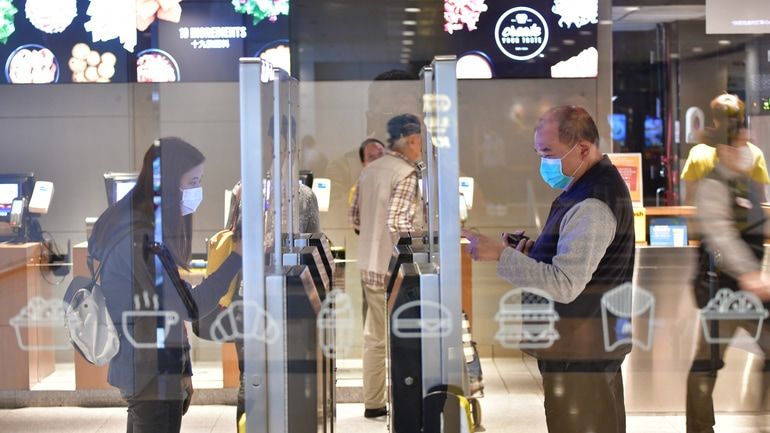
The Top 5 Benefits of Self-Service Technology for Restaurants
1. Accuracy
Everyone makes mistakes. But in the restaurant industry, too many mistakes can result in a negative experience for your customers. Whether it’s a missing side dish or a table that’s reserved for the wrong night, human error has long been a problem for restaurants.
Self-service technology can dramatically reduce the margin for error in restaurants because the customer is the one inputting the necessary information. For instance, with a self-service kiosk, there’s no chance that a server will misunderstand or forget a customer’s order. And with reservation booking platforms, there’s no risk that a host might book a table for the wrong time or date. This kind of accuracy is especially important in the wake of COVID-19, when even minor mistakes could put the safety of customers and staff at risk.
2. Speed
No matter what type of restaurant you operate, speed is key to a great customer experience. Unfortunately, older restaurant technology, such as cash registers and outdated payment terminals, can slow things down.
One of the biggest advantages of self-service technologies is speed. Tools such as self-ordering kiosks and online ordering platforms help customers navigate restaurant menus quickly by showing them bite-sized bits of information. These orders are then input directly into the restaurant POS the moment the customer types them in so the kitchen can begin preparing the food immediately. This process completely eliminates the downtime that usually occurs between the customer ordering and the server punching the information into the POS. And in the age of COVID-19, getting customers in and out of your restaurant quickly is more important than ever before.
Want to get started with online ordering?
3. Convenience
Whether it’s ordering a custom dish or paying for a meal, diners expect some level of convenience in ordering and enjoying a restaurant meal. In short, the fewer steps involved, the better.
Convenience is an obvious benefit of self-service technology. Self-service technology streamlines the customer journey, reducing the amount of steps involved in completing an action like booking a table or placing an order. In most cases, customers can do all of this on their personal phone, making the restaurant experience as convenient as sending a text.
4. Increased Revenue
Now, more than ever before, restaurants need to find ways to make their businesses more efficient and profitable. The problem is, it can be hard to train staff on how to effectively upsell multiple messages or to convince customers to add pricey modifiers, especially with half (51%) of the American consumers spending less than they did before the pandemic.
In contrast, self-service technologies can be very effective at upselling customers and influencing their behavior. For instance, self-ordering kiosks can be programmed to use targeted and intuitive upsell prompts. This means that when a customer is guided through the ordering process, they are presented with opportunities to increase their check size by adding extra paid toppings, upgrading to premium sides, or to making their meal a combo. In fact, industry experts have found that restaurants using self-ordering kiosks realize an average increase in purchases of 12 to 22%.
Self-service technologies like kiosks and online ordering can also help to increase revenue by reducing social friction. Without a person on the other end of the order, there’s no fear of negative judgment so customers feel more comfortable placing bigger or more customized orders. Just think about how much easier it is to add triple cheese to your pizza when ordering online, versus ordering directly from a server. And in most cases, this feeling of freedom translates into more money for your restaurant.
In fact, TouchBistro’s 2020 State of Restaurants Report found that more than half of FSRs have seen customers spend 11% to 20% more on online orders.
5. Safety
In the age of COVID-19, what was once considered safe will no longer cut it for most customers. For instance, something as simple as ordering from a cashier or server is now perceived as posing a major health risk.
Self-service technologies can help to make restaurants safer for both customers and staff by reducing and even eliminating most face-to-face interactions. Staff no longer need to interact directly with customers to help them reserve a table, place an order, or pay for their meal – all of this can be done digitally by the customer themselves. And as one study found, safety precautions are second only to food quality when today’s customers consider which restaurant to visit.
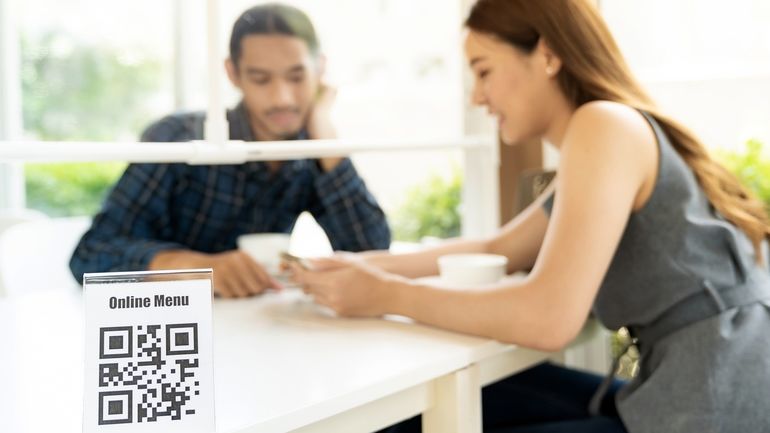
5 Types of Self-Service Technology That Can Help Promote Physical Distancing
Physical distance has never really been a hallmark of the restaurant industry, especially with the rise of trends such as communal seating, shared plates, and open concept kitchens.
But in the wake of COVID-19, restaurants have no choice but to start giving diners their space. In order to adhere to physical distancing guidelines of six feet of space, restaurants will have to radically alter the way they operate. Fortunately, the self-serve technologies listed below can help to make that happen.
1. QR Code Menus
In the age of COVID-19, menus present a major challenge for restaurants. On the one hand, printed menus are a high-touch item that can potentially spread the coronavirus when passed between staff and customers. On the other hand, a stationary menu board requires customers to crowd around one area, making it difficult to enforce physical distancing.
QR code menus are an example of self-service technology that can solve the issues associated with printed menus and stationary menu boards. A QR code menu is essentially a digital version of your menu that diners can access by scanning a QR code with their mobile phones – just think of it like a barcode for your menu.
With solutions like TouchBistro’s QR Code Generator, any restaurant can create a dedicated QR code for its menu. All you need to do is input your website menu URL and logo into the QR Code Menu Generator, print the QR code, and display it in your restaurant. Customers can then scan this code with their phone to access the menu and place their order. Customers don’t even need to download a separate app because most modern smartphones come with a QR code reader built right into their phone’s camera.
This advanced technology not only saves staff from having to come to the table to take each customer’s order, but it also ensures that the only thing a customer needs to touch is their own phone. Some restaurants, like Espita in Washington D.C., have even implemented QR code menu solutions that allow customers to order and pay from their phone for a fully contactless experience.

Instantly create contactless menus for your restaurant with TouchBistro’s QR Code Generator.
2. Self-Service Kiosks
COVID-19 has also presented a challenge for QSRs that require customers to place their orders at the counter with a staff member. While this customer journey made sense before the pandemic, now the process makes it difficult for customers to keep six feet of distance from staff and from other guests waiting in line.
Self-serve solutions like TouchBistro’s Self-Ordering Kiosks provide a natural solution to this dilemma by giving guests the power to order and pay for their meal all by themselves – kind of like a sophisticated vending machine, but for meals.
A self-service kiosk usually consists of a touchscreen (often a tablet) equipped with an easy-to-use digital interface, which displays the restaurant’s menu and guides customers through the ordering process. These kiosks are integrated directly with your POS, so orders are sent straight to the kitchen.
The benefit of this technology is that a self-service kiosk allows the customer to build and pay for their meal, all without interacting with restaurant staff. To prevent crowding, some kiosks also send customers a text when their order is ready, which they can then pick up from a designated area. Sam Zietz of GRUBBRR has described this system as a kind of “synthetic type of drive-thru for restaurants that don’t have them,” where customers can build, pay for, and pick up their meal without any face-to-face interaction.
Of course, some customers may be wary of using touchscreens in the age of COVID-19. The good news is that modern kiosk designs are easy to disinfect and can even be fitted to hold sanitizing wipes or gels for customers to use before and after using the screen.
Some kiosks can also be paired with QR code menu integrations so customers can do the actual ordering from their personal phone and then pay with contactless payment at the self-service kiosk – a 100% hands-off solution. An even more high-tech solution can be found at New York City’s Brooklyn Dumpling House, which recently installed self-serve kiosks equipped with heat-sensing screens that can detect when a customer’s finger is hovering over different buttons.
3. Contactless Payments
Like ordering from a cashier, the traditional way of paying in restaurants is not really built for the COVID-19 era. In the U.S., many restaurants continue to rely on high-touch payments such as cash or asking their customers to sign a credit card receipt after paying for their meal (a practice that is no longer actually required of merchants). The problem with this process is that customers not only have to handle high-touch surfaces, but they also have to interact directly with staff to complete their payment.
Contactless payments eliminate the need for this kind of face-to-face interaction. They rely on debit cards, credit cards, or mobile wallets that use radio-frequency identification or near field communication to communicate with a payment reader. This allows the customer to pay for their order without any physical contact between their card (or smartphone) and the payment terminal.
This technology allows customers to fully complete a payment without intervention by a staff member, making it far easier for staff and customers to maintain physical distancing when a customer is paying for their meal. It’s a solution that places like Washington, D.C.’s Call Your Mother Deli implemented in the early days of the pandemic as part of its improved safety measures.
Even restaurants that have done away with signatures, may still want to consider contactless payments. As mentioned above, contactless payments simply require the customer to hover their card or phone over a payment terminal. This kind of zero-touch payment method is a much more hygienic option than swiping or dipping a debit or credit card, which still requires customers to touch a PIN pad.
And it’s a solution that customers seem to be embracing. As a recent Mastercard survey found, 79% of consumers worldwide are using some form of contactless payment in light of the pandemic, and contactless transactions were up 40% worldwide in the first quarter of 2020. Even major chains such as Qdoba Mexican Eats have begun recognizing the long-term benefits of offering contactless payments.
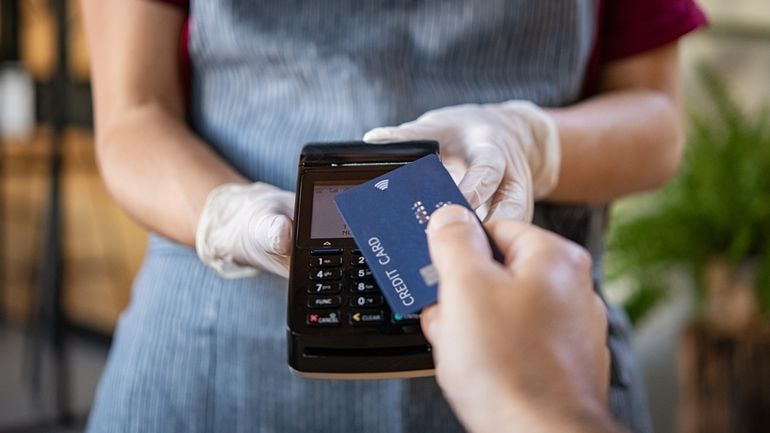
4. Online Ordering
Takeout generally poses fewer challenges when it comes to physical distancing because orders can theoretically be placed over the phone. However, many restaurants still struggle to keep customers apart when they are placing orders in person or arriving to pick up.
While taking call-in orders is one option, direct online ordering is one of the easiest ways for restaurants to manage and control the flow of customers ordering and picking up takeout orders. With online ordering solutions like TouchBistro Online Ordering, customers can place their order for takeout or delivery directly from a restaurant’s website or order.tbdine.com – no visit to the restaurant or phone call required. For restaurants like Toronto pizza joint 850 Degrees, online ordering has not only helped to promote social distancing, but it has already helped bring in enough revenue to rehire several staff members.
In states where dine-in restrictions remain in place, self-service technology like online ordering is especially vital because it allows customers to continue enjoying restaurant fare without the need to interact with restaurant staff. In fact, Technomic Ignite found there was a significant increase in the number of diners using online ordering platforms between Q1 and Q2 of 2020, while in-person ordering took a major dive.
5. Reservations Management Platforms
Similar to placing a takeout order, booking a reservation at a restaurant can be done without face-to-face contact between staff and customers. However, there are cases where customers may visit a restaurant in person to put their name on a waitlist or to book a table for a later time, which can lead to overcrowding and make physical distancing difficult to enforce.
Reservations management platforms like TouchBistro Reservations can help to better control the flow of people coming in and out of a restaurant by taking the booking process entirely online. These kinds of self-service platforms allow guests to reserve a table in advance through your website, app, or a third-party platform, and even add their name to digital waitlists.
Not only does this kind of system reduce any crowding caused by walk-ins, but it also helps restaurants manage social distancing within the venue by spacing out bookings and digitally tracking capacity limits. For instance, the perpetually packed New York City staple Jacob’s Pickles recently added a reservations management system as a way to control outdoor dining on its patio. Using the software, the restaurant has been able to space out bookings and limit diners to one-hour sittings.

Learn how a restaurant reservations system can help your business thrive.
While self-service technology such as kiosks and contactless payments have been around for quite some time, COVID-19 has accelerated adoption of these technologies. What was once considered futuristic tech for only the most cutting-edge restaurants is now becoming commonplace. And with consumers quickly adapting to the new way or ordering or paying for their meal, it’s likely that this technology is here to stay.
Sign up for our free weekly TouchBistro Newsletter

